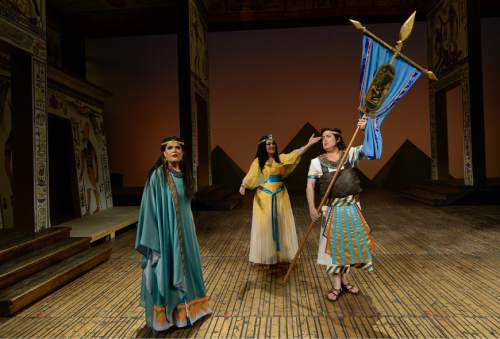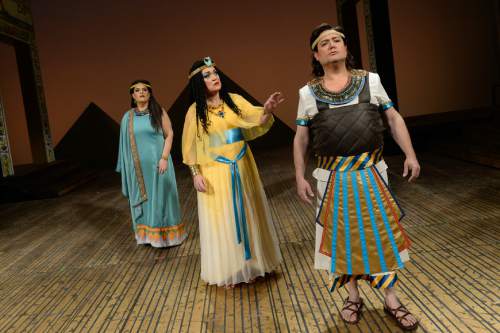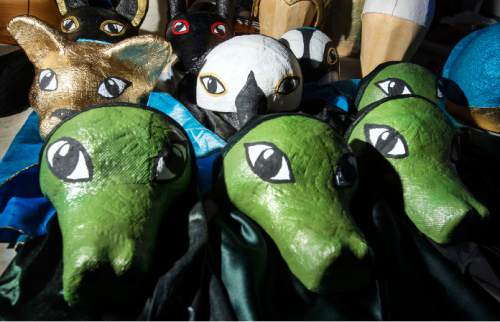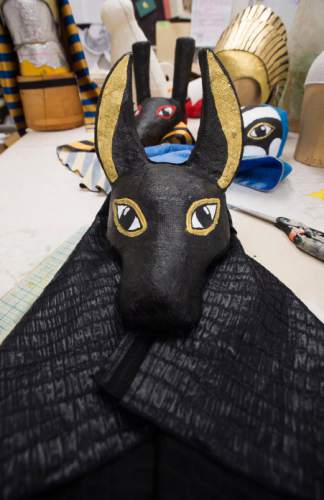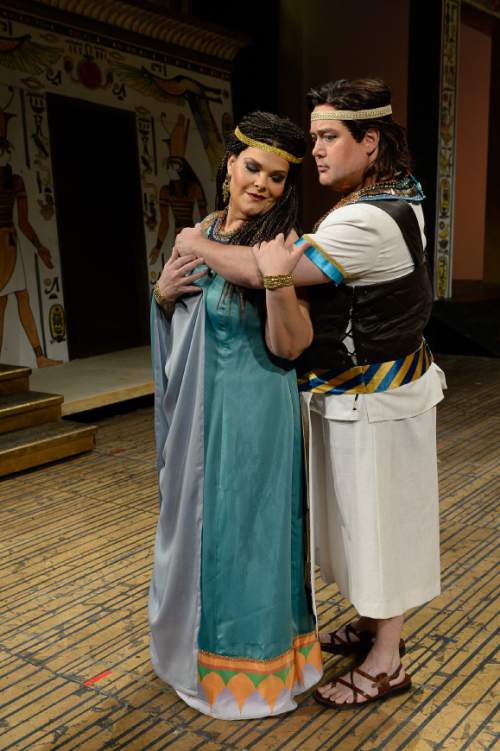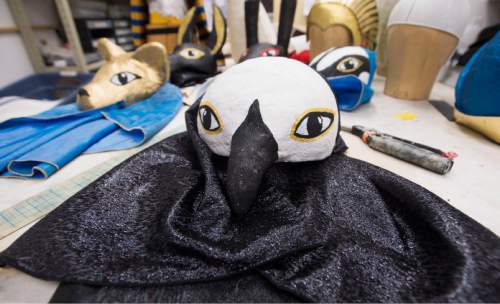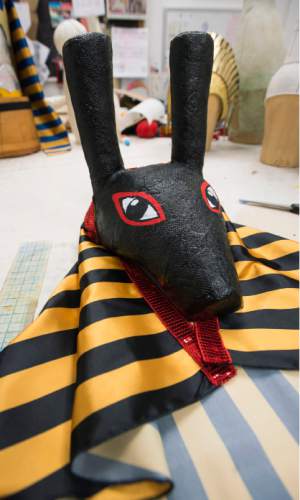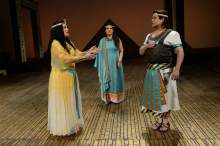This is an archived article that was published on sltrib.com in 2016, and information in the article may be outdated. It is provided only for personal research purposes and may not be reprinted.
Think of "Aida" and you think of pyramids, an onstage menagerie and a cast of thousands. But to find the true magic of Verdi's masterpiece, think small, say the conductor and director of the Utah Opera production that will open Saturday, March 12.
"People think of the Triumphal March and the enormous grand finale of the second act with all the trumpets, the chorus and the biggest orchestra possible — that's the image we all have of 'Aida' first and foremost," conductor Ari Pelto said. "But moments later, we go into the third act and there's the most delicate, intimate orchestration — two flutes, a viola, just very, very delicately scored. … The grandeur of the second act juxtaposed with the intricacy and delicacy of the third and fourth acts is just masterful."
That's true of the story as well as the music, he said. "It's a human story, a touching and personal love story."
At the heart of "Aida" is a love triangle. Amneris, the pharaoh's daughter, and Aida, her slave, both love the army captain Radamès, who loves Aida and is unaware of Amneris' interest.
There's something else Amneris and Radamès don't know: Aida is a princess, too. When her father, the Ethiopian king Amonasro, is captured in an unsuccessful attempt to rescue her, she and Radamès are placed in even more difficult positions.
Amneris, too, struggles with conflicts that make her more than just the third wheel who thwarts true love. Mezzo Katharine Goeldner has "found a way to make this iconic figure very vulnerable," stage director Garnett Bruce said. "She's mad as hell, but then she turns around and it's like, 'Aren't I worthy of love too?' "
"It has everything to do with the expression of human feelings — love, turmoil, distress," Pelto said.
Jennifer Check has sung the role of Aida in concert and played the High Priestess at the Metropolitan Opera, but this will be her first time performing the title role onstage. Goeldner is also singing her role for the first time. Marc Heller, who will play Radamès, has sung his role in a couple of blockbuster productions, including one at the pyramids of Giza (where, he noted, not even a glimpse of a nearby Pizza Hut could spoil the magic). The three singers agreed that while high-definition broadcasts in movie theaters are a fun supplement to the operagoing experience, there's no substitute for live performance — no matter the size of the production.
"There's something about live," Goeldner said. "There's a euphoria in the room."
There won't, however, be any elephants in the room. Animals are too unpredictable, Bruce said. That isn't to say there won't be plenty of eye candy. The production features new costumes designed by Alice Bristow, dance sequences choreographed by Ririe-Woodbury's Daniel Charon, and grand sets designed by Michael Yeargan.
"The paint is fresh, the hieroglyphics are new, the gold pops — you're not among the ruins," Bruce said. "It's not a relic in a case." —
Pyramid scheme
Utah Opera presents Giuseppe Verdi's "Aida." It will be sung in Italian, with supertitles.
When • Opens Saturday, March 12, 7:30 p.m.; evening performances continue March 14, 16 and 18, with a 2 p.m. matinee March 20
Where • Capitol Theatre, 50 W. 200 South, Salt Lake City
Tickets • $18-$107 ($5 more on performance day); discounts for students, people under 30 and groups; utahopera.org
Running time • 3 hours, including intermission
In a nutshell • Two princesses, one enslaved by the other, are in love with the same man. All of them are torn between love and duty.
Learn more • Utah Opera principal coach Carol Anderson will give a preview lecture an hour before curtain, and artistic director Christopher McBeth will lead a Q&A after each performance; all are in the Capitol Room on the west side of the theater. Background materials by Paul Dorgan are at utahopera.org/watch-listen-learn/online-learning-courses.


